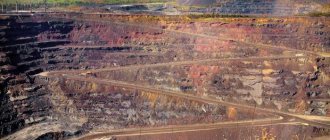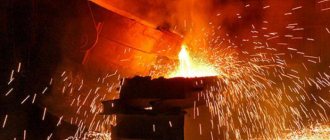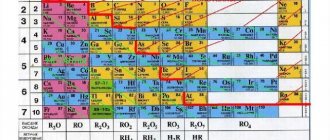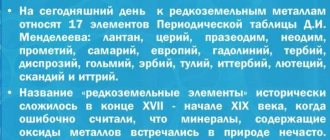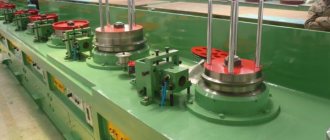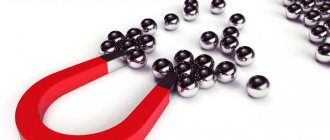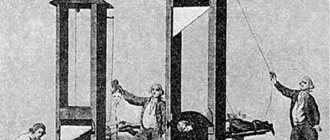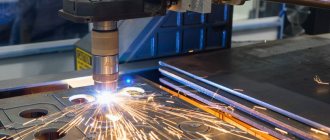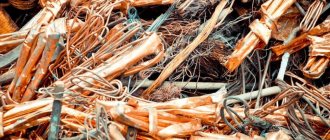Metals are a large group of simple elements with characteristic features, such as high thermal and electrical conductivity, positive temperature coefficient, and more. In order to correctly classify and understand what’s what, you need to understand all the nuances. Let's try to consider such basic types of metals as ferrous, non-ferrous, precious, as well as alloys. This is a fairly broad and complex topic, but we will try to break everything down.
What should everyone know?
Before classifying metals into groups, it is necessary to understand the basic characteristics. The primary ones include the negative conductivity coefficient of electricity. This suggests that as temperature decreases, conductivity increases and some conductors become superconductors. At the same time, an increase in temperature leads to a partial or complete loss of throughput. Secondary features include a metallic luster, as well as a high melting point. In addition, some metals in the form of compounds play the role of a reducing agent in redox reactions. Please note that pure metals are practically never found in nature, so there is no need to forget about ore and nuggets either.
Palladium
Palladium is very similar to platinum, but has a much lower density, close to silver. Palladium coins were produced only in 1977-1995, these were collector's issues of improved quality PROOF and Uncirculated.
| Parameter | Meaning |
| Color | Silver white |
| Chemical designation | Pd |
| Melting temperature | 1554°C |
| Density | 12.02 g/cm3 |
| Mohs hardness scale | 4,8 |
About ferrous metals
This group includes iron, as well as its alloys (cast iron, ferroalloys). Essentially, ferrous metals are an alloy of iron and carbon, but in addition to this, there are other chemical elements in the composition, such as sulfur, phosphorus, silicon, etc. If it is necessary to give the alloy specific properties necessary to fulfill certain purposes, alloying substances are added to which are most often copper, chromium or nickel. All types of ferrous metals are classified according to their carbon content. So, the following alloys exist:
- Cast iron - the amount of carbon ranges from 2 to 4.3%, in some cases reaching a critical level of 5%. Various chemical elements directly affect the properties of the product. Thus, sulfur and phosphorus increase brittleness, and chromium and nickel additives make cast iron more heat-resistant and corrosion-resistant.
- Steel – carbon content up to 2%. It differs from cast iron in its high ductility, as well as high technological indicators (easier to process).
Features of cast iron and steel in detail
Currently, there are several types of cast iron that are used in everyday life, as well as in industry: foundry (gray) and conversion (white). The latter differs from the first type in that carbon is in a bound state in the form of cement, while in the first case it is in a free state in the form of graphite. The decrease in the strength of this material is due to the fact that graphite plates disrupt the metal structure, thereby weakening it. There is modified gray cast iron. Its features are that the graphite is in a spherical shape, which increases the mechanical properties of the product.
You have probably already realized that they have become more versatile, which is due to not so much carbon in the composition. Thus, structural steels contain from 0.02 to 0.85% carbon and are used for construction. Their main advantage is good ductility. The degree of fragility is low. There are also instrumental ones, in which the carbon content is slightly higher - from 0.65 to 1.4%, therefore, it is a more durable alloy, but brittle. It is used, as the name suggests, as a blank for creating tools (cutting, sawing working parts of machines and units). Now we have looked at the types of ferrous metals, so let's move on.
Noble metals
This group includes chemically stable alloys that do not oxidize in water and air. It is worth noting that the amount of such metals on the entire planet is relatively small, and the process of extraction and processing is extremely complex and labor-intensive. If for a long time humanity knew about only 7 groups, today there are several more of them. Thus, the most famous types of precious metals: gold, silver, platinum, osmium, rhodium, palladium, iridium, etc. All of them are found in nature. There are also so-called isotopes. They are obtained in laboratories through complex chemical reactions. The most expensive such metal is California-252, costing 500 thousand dollars per gram. The most popular is osmium-187, obtained in modern laboratories.
Unusual materials for coins
Over the history of the existence of coins, it became clear that banknotes can be made from precious and non-precious metals, as well as from unusual materials. For example, due to large shortages during World War II, Manchukuo began to issue money from cardboard impregnated with zinc chloride. Such money did not last long, but at that time there was no choice.
rice. 3. Porcelain coins
During 1914-1924, porcelain coins were issued in Germany, which was also an unusual solution. But the African state of Congo relatively recently, in 2005 and 2006, issued coins made of wood and also glass. And in Transnistria, in modern times, money is issued from polymer material. According to some experts, such technology has every reason to gain widespread acceptance.
About silver and gold
Since the Stone Age, people have been familiar with such a metal as gold. It is safe to say that this is the most important precious metal in the whole world. In nature, it is most often found as nuggets with a small amount of impurities or in an alloy with silver. Exceptional features include thermal conductivity and very low resistance. Of course, one cannot fail to note the malleability of gold, which is why it is an extremely popular material for making jewelry. Interesting fact: the largest gold nugget was found in Australia. He weighed about 90 kilograms.
If we consider the main types of precious metals, we cannot help but mention silver. In nature, this material is found in its native form (silver ore). But it is worth noting that the main production is carried out from complex ores, where there is relatively little silver, but deposits of such minerals are more common. It is a very soft and ductile metal that has exceptional electrical and thermal conductivity.
Copper
The first copper coins, called pools, were produced in the 15th century in the Novgorod and Tver territories, but were not widespread. They were small in size and did not have a perfectly round shape. The relationship between their nominal value and silver coins has not yet been precisely clarified; more precisely, numismatists have not been able to come to a consensus. Pools were in circulation, albeit very limited, until the unification of Rus', after which copper money appeared again only under Alexei Mikhailovich. This was an attempt to equate silver and copper based on their size and weight.
The result was a crushing exchange rate crash and the subsequent infamous “copper riot.” The idea was considered unsuccessful and was quickly abandoned. Full-fledged copper coins began to be minted from the beginning of the 18th century, and they already had a modern round shape and were on par with silver “scales”, far ahead of their time in this sense. The excellent quality of these copper coins made it possible to partially replace the amount of coinage silver that the country was already short of.
The first coins of Russia were made from this metal, in particular - lower denominations up to 5 kopecks inclusive of 1924, however, the production of copper coins was considered unprofitable and already in 1026 they were replaced by other metals - in particular, more durable and less expensive bronze.
In the modern history of Russia, a copper coin with cupronickel plating was also issued; these were 5 rubles in 1997. They were no longer minted, replacing the base with steel, but they are still found in circulation to this day.
Rhodium and platinum
Rhodium is a metal that does not have its own minerals, therefore it is one of the most expensive. You will have to pay more than $220 per gram. This noble metal has a silvery color with a bluish tint. It is distinguished by its resistance to chemical and temperature influences, but is extremely vulnerable to mechanical damage due to its fragility. Since it is quite expensive, it is used only where an analogue cannot be found.
If we consider the types and types of metals, we cannot fail to mention platinum, discovered in 1952 by a Swedish chemist. This is a fairly rare material and is found in nature only in combination of alloys with other metals. The extraction process is extremely labor-intensive and requires large investments, but it is worth it, because platinum is not affected by any acid known today. When heated, it does not change color and does not oxidize.
What metals and alloys are coins made from?
Added Jun 25, 2015 to All about numismatics
What metal are Soviet and Russian coins made and were made from?
Such a simple question arouses the interest of many people. Starting from the 18th century in the Russian Empire, coins were minted from 3 main metals: gold, silver and copper. In 1828, platinum joined the above metals. But coins made of precious metal lasted only a short time: only 17 years. Already in 1845, platinum coins were withdrawn from circulation and completely stopped further distribution. Coins continued to be minted in 3 metals until 1926. It was this year that the Soviet Union decided to replace the previously used copper with aluminum bronze. As for silver coins, they existed until 1931, and then silver was changed to cupronickel. It was then that alloys that consisted of base metals began to be actively used. Such alloys are still relevant today. It is worth paying attention to the fact that exceptions are made for collectors and sometimes commemorative coins are issued entirely from precious metals. Now we will take a look at the alloys that were used in Soviet and Russian coins.
Gold
The very first coins to appear were made of gold. More precisely, the share of gold in that alloy was 75%. Gold is known for its softness and ductility, as well as its beautiful yellow color. . Due to the high value of gold, it was used only for particularly large and valuable coins. Gold is not very durable, so it was often used in an alloy with copper to increase the strength of coins.
Silver
The very first historical coins included, in addition to gold, silver (25%). Silver is distinguished by its ductility and softness. It has an amazing silver color. Silver is also known for its poor castability and its remarkable chemical resistance. The structure of silver is harder than gold. But its hardness is still not enough, so when minting coins it uses an alloy of silver and copper.
Platinum
The first coins made of platinum appeared in Russia in 1828, and already in 1845 they stopped minting. The main version of such a sudden cessation of minting is that then platinum from Europe sharply soared in price, which affected the minting of coins. It became too expensive to produce them. Platinum itself is a hard and low-ductility metal. Its color is steel gray. Platinum is known for its chemical resistance. In Russia, coins were minted from unrefined platinum, since in those years they simply did not know how to separate the metals that make up the platinum group. In total, eleven platinum coins were issued in the USSR, and sixteen such coins were issued in Russia in the 90s. Since 1996, platinum coins have ceased to be issued.
I would like to note that coins made of these 3 metals, being in a harsh environment (earth) for a very long time, are not subject to oxidation and corrosion, and even if there are surface changes on the coin, you can easily clean it.
Copper
Copper is a red metal that is not as chemically stable as platinum, gold or silver. At the same time, copper is 3 times harder than gold and 2 times harder than silver. Unrefined copper was used for minting coins, but after the advent of galvanic purification methods, unrefined copper was no longer supplied to mints. In Russia and the USSR, coins for internal circulation made of copper were issued from 1700 to 1926. Since 1926, copper has been replaced by aluminum bronze.
Aluminum bronze
Everyone knows this metal as a yellowish alloy, which consists of 95% copper, and the remaining 5% is aluminum. This type of bronze is known for its resistance to wear, which means the coin has very strong physical properties. In the USSR, aluminum bronze was used during the issue of coins in denominations of 1,2,3 and 5 kopecks during the years 1927-1957.
Brass
Brass is an alloy of zinc and copper and is yellow in color. Brass is harder than pure copper. In the Soviet Union, from 1958 to 1991, brass was used during the minting of coins whose denominations were 1,2,3 and 5 kopecks. In 1991, 10-kopeck brass coins were minted. In Russia, brass coins were minted from 1992 to 1993 in coins whose denomination was 50 and 100 rubles, respectively. Since 1997, brass coins have been minted in denominations of 10 and 50 kopecks. Brass has also been used since 1997 in ten-ruble bimetal coins.
Cupronickel
It is an alloy of copper, zinc and nickel. It has a beautiful color, the same as silver. Very resistant to mechanical and chemical influences. In the Soviet Union, it was minted for circulation coins in denominations of 10, 15 and 20 kopecks in 1931-1957. Since 1997, it has been used in 1 and 5 kopecks, as well as in 5 rubles (until mid-2009) for cladding (coating) coins.
Copper-nickel alloy
It also has a silver color, but is less resistant to physical and mechanical influences than cupronickel. It was the basis for coins of the USSR, in 1958-1991 for 10, 15, 20, 50 kopecks, as well as for 1 ruble. Production from this alloy began for commemorative and anniversary coins of the USSR in 1965-1991, although in 1975 the nickel content in coins began to be increased to improve the mechanical properties and appearance of the coins. After the collapse of the USSR, coins were minted from a copper-nickel alloy in denominations of 10, 20, 50 and 100 rubles until 1993. And since 1997, 1 and 2 rubles from this alloy appeared.
Steel, clad
This kind of steel began to be used during the State Emergency Committee (1991) for coins with a face value of 10 kopecks. Usually coins are clad with cupronickel, brass or copper to make it look beautiful and give a golden or silver color. Now in Russia they issue coins for all denominations in this way.
Bimetallic coins
These are coins that are made from two metals and have just two components. They began to be minted in the same way in 1991 and are still being minted, the well-known 10 rubles. in which the ring is made of brass, and the disk (core) is made of cupronickel.
As can be seen from the above, starting from the 20th century, when progress stepped far forward, alloys for issuing coins began to change. This is primarily done for economic and mechanical reasons. The state is looking for ways to ensure that the issue of coins not only breaks even, but also that the coins do not wear out and can remain in circulation for a long time. For example, like coins from 1997-1998, which can still be found in circulation and which have not lost their original appearance over so many years.
It is also important to know what a coin is made of for those who are cops, like me. After all, for every coin found in the ground, there are only certain cleaning methods; for example, methods for cleaning silver from copper, etc., are not suitable. Hope you found this article useful.
Types of non-ferrous metals
This group is the most in demand, since most materials are raw materials for the production of rolled metal. If we talk about the scope of application, it is quite extensive, these are: mechanical engineering, metallurgy, radio electronics, high technology, etc. Based on their physical properties, there are the following types of non-ferrous metals:
- heavy (lead, zinc, tin, nickel, etc.);
- lightweight (aluminum, titanium, magnesium, etc.).
According to this classification, there is metallurgy of light and heavy metals. It is no secret that absolutely any equipment can be made from this group. Please note that non-ferrous metals include all types of metal alloys, except iron. Now let's move on.
Main types of heavy metals
To date, there are approximately 40 definitions of the concept of this group of materials. Among the distinctive features is an impressive atomic weight, usually more than 50. From this we can conclude that everything that comes after vanadium (regardless of density) should be included in the list. But if we use another definition, then the determining parameter may be density, which should be more than that of iron (8 g/cm3). In this case, the list will include: lead, mercury, copper, but tin will be behind the list. Today the issue of environmental pollution by this group is extremely acute. This is because many metals are used in heavy industry and end up in the ocean through wastewater. The main problem is the high toxicity of mercury, lead, and cadmium. In addition, some types of heavy metals tend to accumulate in living organisms. Thus, due to mercury poisoning in 1977, there were more than 2,300 victims.
Brass
It is a compound of copper and zinc, which is characterized by a low copper content. Its cost is much lower than bronze and pure copper itself. In current coin production, this material is used mainly for the outer coating of steel blanks, however, in the history of Russia in the post-Soviet period, there were also pure brass samples of 10 and 50 kopeck coins. Also in this quality are the rings of bimetallic 10 rubles minted from 2000-16. and some anniversary copies of the period 1995-96.
Mercury, lead and cadmium
These are the most dangerous non-ferrous metals classified as heavy. They are major environmental pollutants. Mercury is a highly toxic metal for humans; it enters the ocean through the atmosphere and through wastewater. When power plants burn coal, mercury compounds enter the atmosphere and then fall into the ocean as precipitation. In addition, many freshwater and marine inhabitants accumulate significant amounts of mercury in their bodies, which has more than once led to human poisoning and even death.
Cadmium is a dispersed and rather rare element that enters the ocean along with wastewater from metallurgical and ore processing industries. It should be noted that cadmium is present in the human body, but it is very small. With chronic poisoning, bones are destroyed and anemia begins. As for lead, this metal is found in a dispersed state almost everywhere. These types of metals, photos of which we have given above, are excreted from the body, but rather slowly, so their excess amounts cause serious health problems. Along with continental dust, approximately 25 thousand tons of lead enter the ocean along with atmospheric precipitation.
On a note
As you can see, there are a wide variety of types and properties of metals. Something is not dangerous at all, and every day we wear a silver cross and a gold ring on our hands. Radioactive substances can kill a person, so environmentalists around the world are trying to partially solve the issue of the release of hazardous metals into the ocean and atmosphere. Of course, solving such problems is very difficult, especially considering that most entrepreneurs do not make contact at all. However, we should not forget that without conductors, which also consist of metal, electrical circuits are impossible, and without iron there will be no cars and other things familiar to us.
We have not touched upon the group of so-called radioactive metals of the periodic table. These include: technetium, polonium, promethium, etc. The main purpose is use in nuclear reactors and weapons, which makes them very dangerous.
